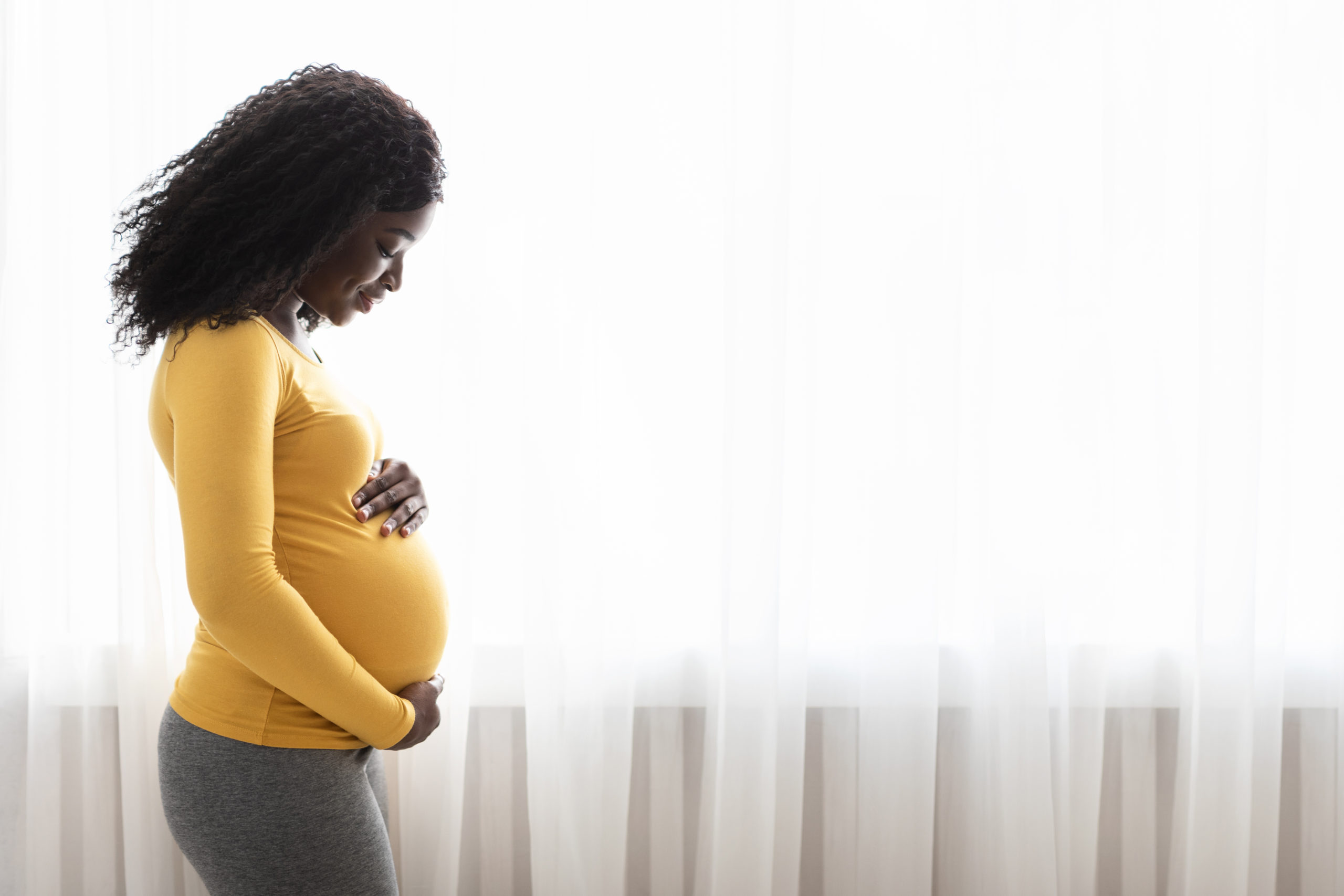Why does upper back pain occur during pregnancy?
Pregnancy is an exciting time during a person’s life. There are countless changes, both physical and mental. Some changes are exciting and beautiful, while other changes can lead to discomfort. If you experience back pain during pregnancy, you are not alone. An estimated 50-80% of pregnant women experience some form of back pain.1 This is due to the rapid posture changes that occur during pregnancy.2
Everything within your body is connected. When there is a shift in one area, there is bound to be a ripple effect that causes a shift in a different area of the body. It is an incredible reminder of how resilient your body is, with its main goal to nourish and support you through all phases of life. Taking the time to learn about the changes that take place within your body during pregnancy can be empowering. This knowledge can help you to be your own best advocate during your pregnancy.
What musculoskeletal changes occur during pregnancy?
At the beginning of pregnancy, a hormone called relaxin is released. This hormone prepares the pelvis for birth. Relaxin increases laxity in the ligaments around the pelvis. This allows more room for delivery.1 The ligaments around the pelvis aren’t the only ones affected by relaxin. All the ligaments within your body loosen up to make room for a growing child. 3
Due to weight gain and carrying a growing child in the front body, your center of gravity is thrown off as well. This causes changes in your postural distribution. This, combined with loosened ligaments, results in several musculoskeletal changes during pregnancy. These postural changes can contribute to upper back pain or discomfort. Let’s dive into some of these specific musculoskeletal changes now.
During pregnancy, the increased weight on the front of the body can contribute to rounded shoulders and forward head posture.4 Rounded shoulders can cause tightness in the muscles of the chest, such as your pectoralis muscles.2 When you’re in a forward flexed position with tight chest muscles, the muscles of your upper back, such as your rhomboids, can become long and weak. Both the weakness and tightness of muscles can contribute to aches and pains.
A similar reaction takes place with forward head posture. The muscles in the front of your neck, such as your deep cervical flexors, become long and weak. The muscles in the back of your neck, such as your levator scapula and upper traps, become short and tight.2 This can cause pain in the neck and upper back between the shoulder blades.
Activities to relieve upper back pain during pregnancy
Targeted exercises can bring relief to pregnant women experiencing upper back pain. Upper back pain during pregnancy is often caused by tightness in the chest and weakness in the upper back. Below are two great exercises to help open up the chest and strengthen the upper back.
Side Lying Mid Back Rotation

Instructions
Start: Lay on your side with your hips and knees bent to 90 degrees. Place a pillow or rolled towel between your knees to gently squeeze throughout the entire exercise
Step 1: Place your hands over your ears with elbows in line with your shoulders
Step 2: Inhale with a good 360-breath. Keep your hips stacked and squeeze the pillow
Step 3: Exhale to gently twist, opening your chest toward the ceiling and elbow toward the wall behind you
Step 4: Be sure that you are only twisting through your upper back, keeping your hips stacked
Step 5: Inhale into your ribs and back. Keep your knees together, squeezing the pillow
Step 6: Exhale as you return to the starting position. Repeat several times, expanding your range of motion as you can
Step 7: Repeat on the opposite side.
Shoulder External Rotation: Bilateral
Instructions
Start: Stand holding your band with hands shoulder distance apart. Bend your elbows to 90°.
Step 1: Bring your feet shoulder-width apart. Stand tall and draw your baby up and in toward your heart to engage your core.
Step 2: Keep your elbows by your side. Slowly pull your hands apart, squeezing your shoulder blades down and back.
Step 3: Slowly return to the starting position. Work within your range of motion. Repeat for 3 sets of 8-10 reps.
Additional ways to relieve upper back pain during pregnancy
Sleep position
Deep sleep is crucial for you and your growing baby. While your body changes, your sleep positions should too. Side sleeping with pillows is the best sleep position during pregnancy. You can sleep on whichever side is most comfortable. But, there are greater benefits to sleeping on your left side. Left side sleeping promotes healthy circulation, better elimination, and less edema.
Using pillows can help you get the most comfortable sleep. You can place a wedge pillow between your growing belly and the bed. This supports your growing belly and avoids excess pressure on your back. Place a pillow next to your back to help prevent you from rolling onto your back. You can also place an oblong pillow in front of your legs and place your top leg only on top of the pillow at 90 degrees. The entirety of your lower leg should be on the pillow.
Lastly, choose a head pillow that keeps your head and neck in a neutral and straight position.
Breathe correctly
Breathing patterns change significantly during pregnancy. Your ribs get pushed out, flattening your diaphragm. Your baby and organs get pushed up, inhibiting full diaphragm expansion. Postural changes also affect proper diaphragm expansion. 5
Try this to practice proper breathing and improve your diaphragm functioning:
- Sit tall in a comfortable position
- Place your hands on the sides of your torso
- Take a deep inhale. Focus on sending your breath into your ribs
Proper clothing
Clothing can help reduce strain on your upper back. Make sure to wear a properly fitting bra with extra support. This will help take pressure off your back and can improve your posture. If you are unsure what your sizing is, you can get measured at most department stores or maternity shops.
Regular exercise
Exercise can support you and your child’s health. It can boost your mood, prevent discomfort, and increase resilience. Some other benefits of exercise during pregnancy include the following
- Lower incidence of cesarean birth
- Lower incidence of preterm birth
- Decreased postpartum recovery time
- Lower incidence of excessive weight gain
- Lower incidence of hypertensive disorders
- Decreased risk of gestational diabetes mellitus
- ewer aches and pains
- Improved physical fitness. 6
Find ways to include both cardio and resistance training for 30 minutes 3 times a week.
Improve your pregnancy-related back pain today
Before you begin a new exercise regimen, please first consult your doctor. Pain and discomfort can negatively impact your pregnancy journey. Digital health solutions, including telemedicine, can help you take care of your pain from home. Targeting the root cause of your pain can improve your pregnancy and postpartum outcomes. If you would like more information on how Orbit can help you decrease pain, manage stress, and improve your well-being, contact us today.
Resources
- Sabino, J., & Grauer, J. N. (2008). Pregnancy and low back pain. Current reviews in musculoskeletal medicine, 1(2), 137–141. https://doi.org/10.1007/s12178-008-9021-8
- Duvall, S. (n.d.). PCES 2.0 Pregnancy and Postpartum Corrective Exercise Specialist Course Book. Core Exercise Solutions.
- Sacks, D. N. (n.d.). Back pain in pregnancy. Back Pain in Pregnancy – Health Encyclopedia – University of Rochester Medical Center. Retrieved September 14, 2022, from https://www.urmc.rochester.edu/encyclopedia/content.aspx?contenttypeid=134&contentid=52#:~:text=Throughout%20pregnancy%2C%20hormones%20affect%20a,especially%20in%20the%20pelvic%20area.
- Morrison, M. M. (2017, January 30). How to improve pregnancy posture and alleviate back pain. How to Improve Pregnancy Posture and Alleviate Back Pain. Retrieved September 14, 2022, from https://www.thebump.com/a/simple-strategies-to-banish-backaches-and-improve-posture
- CSPC. (2019, December 10). Effects of pregnancy on musculoskeletal system: CSPC Physiotherapy, Leeds. CSPC Physiotherapy. Retrieved September 14, 2022, from https://www.cspc.co.uk/complex-conditions/your-body-during-pregnancy/effects-of-pregnancy-on-musculoskeletal-system/
- Nascimento, S. L., Surita, F. G., & Cecatti, J. G. (2012). Physical exercise during pregnancy. Current Opinion in Obstetrics & Gynecology, 24(6), 387–394. https://doi.org/10.1097/gco.0b013e328359f131
